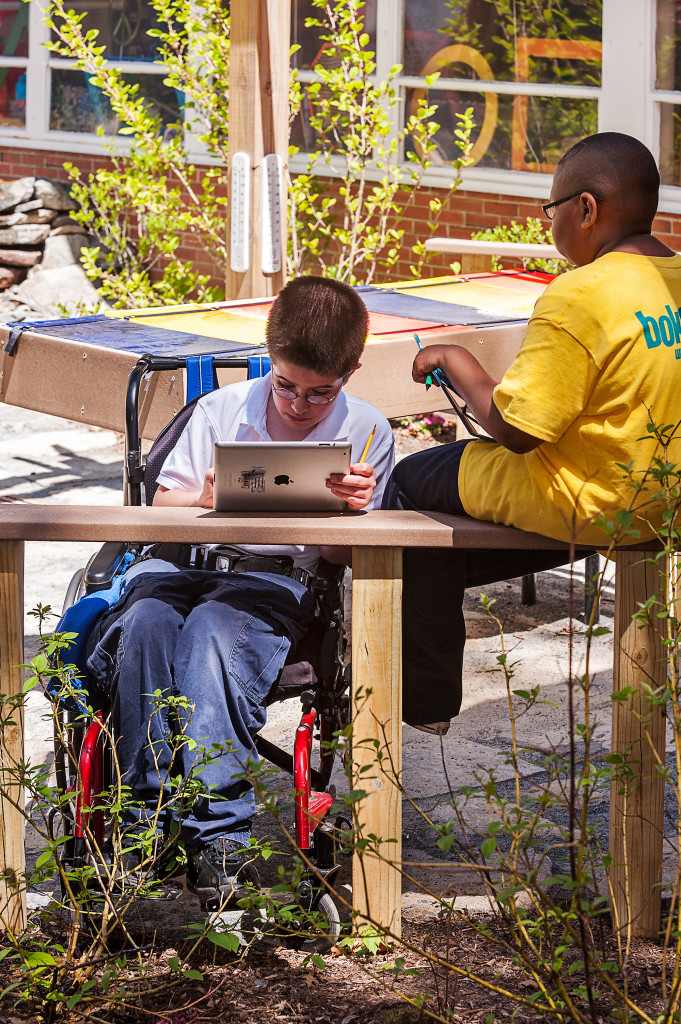Universal Design
When you’re thinking about the design or renovation of a play space, one of the first things to consider is how children of all abilities will be able to use the space. The practice of universal design means that the focus is on creating a space that will meet the needs of the greatest number of end users. By implementing this approach, play elements can be used in multiple ways, and accessible elements will invite children of all abilities to play together. These elements may be either natural features or play equipment, and other key things to consider are the pathways that connect various play spaces, and the entrances to these play areas.

This railing doubles as a place to sit (Boston Schoolyard Initiative | Klopfer Martin Design Group | Image: Christian Phillips Photography)
Universal Design Principles & Tips
- The majority of features and spaces are usable by all people, instead of having separate accessible features
- Circulating around and using the play space is simple and easy – make sure to use accessible surfacing that allows wheelchair access with minimal effort
- Provide the opportunity for challenge for all users, while minimizing hazards
We highly recommend reading the Let’s Play Toolkit for an in-depth look at creating accessible play spaces in a Canadian setting. You can also browse through the Accessible Adventures section of our inspirational projects to get creative ideas on how to integrate accessible fun into your own outdoor play and learning environment.
